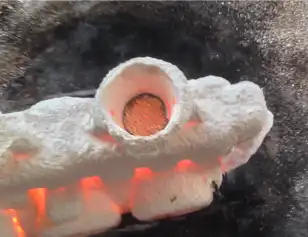
Knowledge
The Application Practice of Filtration Technology in Precision Casting (Part One)

In recent years, with the development of science and technology and the demands of industrial production, the quality requirements for casting alloys have become increasingly strict. For some castings, not only are qualified chemical compositions and mechanical properties required, but also superior internal and external qualities. However, traditional melting and casting processes often fail to meet these requirements, with the key issue being that the non-metallic inclusions in the alloy exceed the allowable range. To reduce the impact of non-metallic inclusions, on the one hand, strict requirements have been imposed on the raw materials used in alloy preparation, and on the other hand, efforts have been made to take measures in the casting process. Casting filtration technology has developed as a new process for filtering and purifying molten metal under these circumstances.
Precision castings generally have higher requirements. When the liquid fills the casting cavity, during the solidification process, the slag cannot be discharged. Coupled with the rapid cooling, the liquid solidifies before the slag can float up, resulting in slag holes and causing the casting to be scrapped. During the pouring process, the use of foam ceramic filters can significantly improve the purity of the metal liquid and reduce casting defects. Filtering technology is already very common in foreign investment casting production. In China, only a few factories use foam ceramic filters for cast steel. In fact, for high-quality castings, the economic benefits brought by using foam ceramic filters (such as increased casting yield, reduced processing and rework costs, and reduced claims) far outweigh the increased production costs of the castings due to the filters.
1. Types and Characteristics of Foam Ceramic Filters
Filters can be classified into three types based on their application conditions: for cast steel, cast iron, and cast aluminum. Here, we mainly introduce the foam ceramic filters for cast steel. The main materials for cast steel foam ceramic filters are zirconia and carbon. Both of these materials have excellent high-temperature resistance and have been verified through years of production practice.
1.1 Zirconia Foam Ceramic Filter
Zirconia ceramic filters are made from high-purity zirconia as the basic raw material and are sintered at temperatures above 1600°C. They have stable properties, high strength, and good resistance to high-temperature thermal shock. Moreover, they do not react with any metal solutions at high temperatures and can withstand the impact of 1700°C molten steel. Therefore, zirconia ceramic filters are suitable for all steel types, including carbon steel, stainless steel, and cobalt-based and nickel-based high-temperature alloys, and can also be used for large cast iron parts. Additionally, this type of filter also has significant application advantages in precision casting processes.
1.2 Carbon Foam Ceramic Filter
The main components of carbon-based filters are carbonaceous materials and alumina or other inorganic aggregates. They have a low heat storage coefficient and are lightweight, which facilitates the rapid start of molten metal when it comes into contact with the filter and eliminates the risk of solidification during the filtration process. Carbon-containing ceramic filters can be made into large-sized products of 300 mm. Due to the relatively low cost of raw materials, they have certain cost advantages. They are mainly used for carbon steel, low-alloy steel, and large cast iron parts. However, they are not suitable for applications where the filter is preheated before pouring, and are not recommended for stainless steel or alloy steel with a carbon content lower than 0.1%.
2. Selection of Foam Ceramic Filters
When using foam ceramic filters, the pore size (number of pores per inch of product, ppi) of the filter should be determined based on the quality requirements of the casting and the amount of inclusions in the molten metal. For cast steel, the pore sizes of the filters are mainly 10 ppi and 15 ppi, while 20 ppi and 30 ppi specifications are used less frequently. The greater the thickness of the filter, the better its strength and the higher its filtration efficiency, but the higher the cost of use. Considering the most suitable strength and filtration efficiency, the following are generally recommended: for dimensions < 60mm, thickness 20 - 22mm; 60 - 100mm, thickness 22 - 25mm; 100 - 150mm, thickness 25 - 30mm; > 150mm, thickness 30 - 40mm.
Vigor has more than 18 years experience on castings. If you have any question and demand of products development or improve your supply chain, please feel free to contact us at info@castings-forging.com



